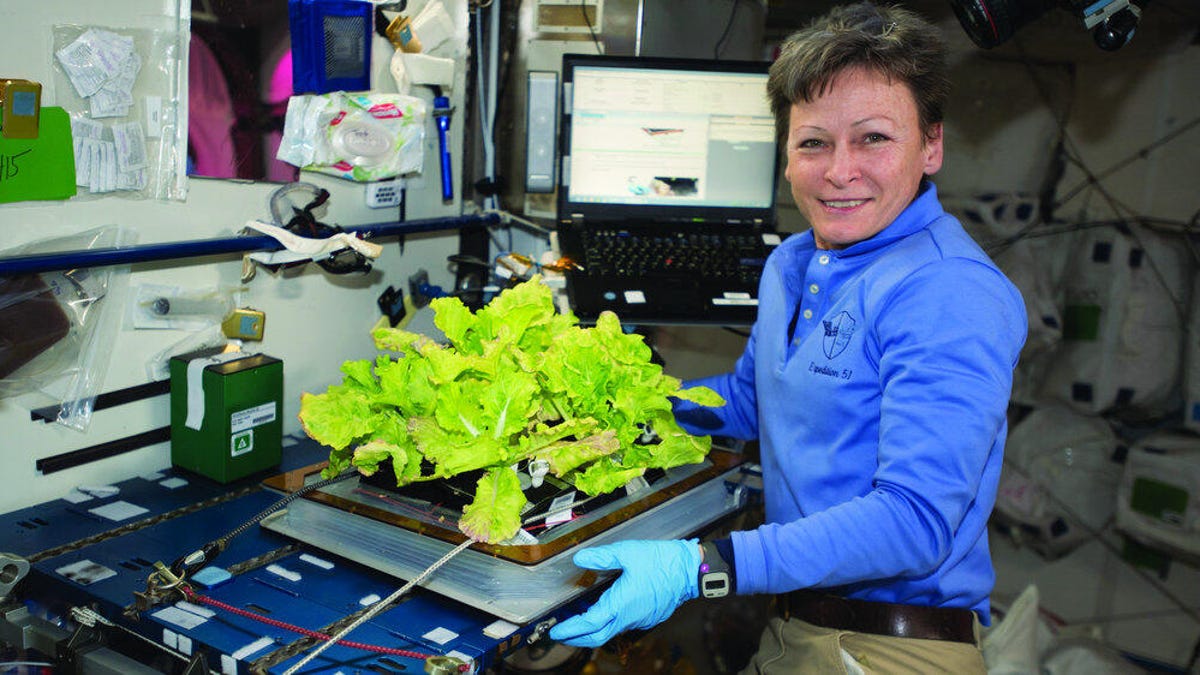Lettuce grown on the space station is safe to eat, scientists say
Which is good because astronauts already ate some.
Rejoice, astronauts! Fresh leafy greens are on the approved space menu alongside the usual selection of sanitized, freeze-dried and prepackaged meals.
A new study published Friday in the journal Frontiers in Plant Science scrutinized lettuce grown on the International Space Station and concluded it's perfectly safe for astronauts to eat. It's also just as nutritious as lettuce grown on Earth.
NASA's Veggie system, which acts like a microgravity greenhouse, arrived on the space station in 2014. Astronauts first nibbled on space-grown "Outredgeous" red romaine lettuce in 2015 after cleaning it with sanitizing wipes. The crew sent samples back to Earth for study, and has continued to grow vegetables on the space station.
The researchers found that lettuce grown in space is very similar to control plants grown on Earth. In some trials "space-grown plant tissue tended to be richer in elements such as potassium, sodium, phosphorus, sulphur and zinc, as well as in phenolics, molecules with proven antiviral, anticancer and anti-inflammatory activity," the Frontiers publisher said in a release Friday.
NASA is keen to develop delicious and nutritious fresh food sources for astronauts on long-term missions to the moon or Mars. The space station also hosted a 3D-printed meat experiment in 2019, which raises visions of some pretty classy future meals in zero gravity.
"Future tests will study other types of leafy crops as well as small fruits like pepper and tomatoes, to help provide supplemental fresh produce for the astronaut diet," said study co-author Gioia Massa, project scientist at NASA's Kennedy Space Center.
Astronauts are moving ever closer to a full-on space salad complete with toppings.


